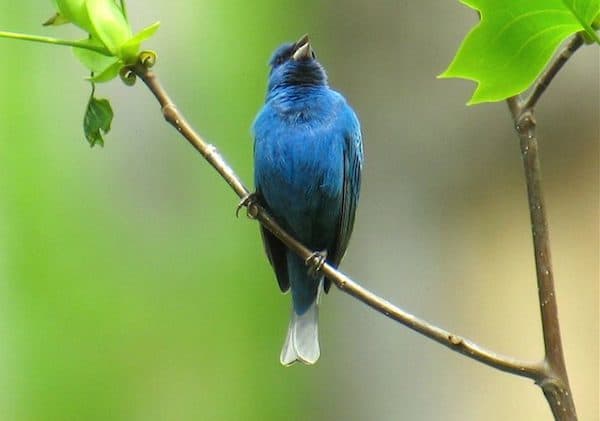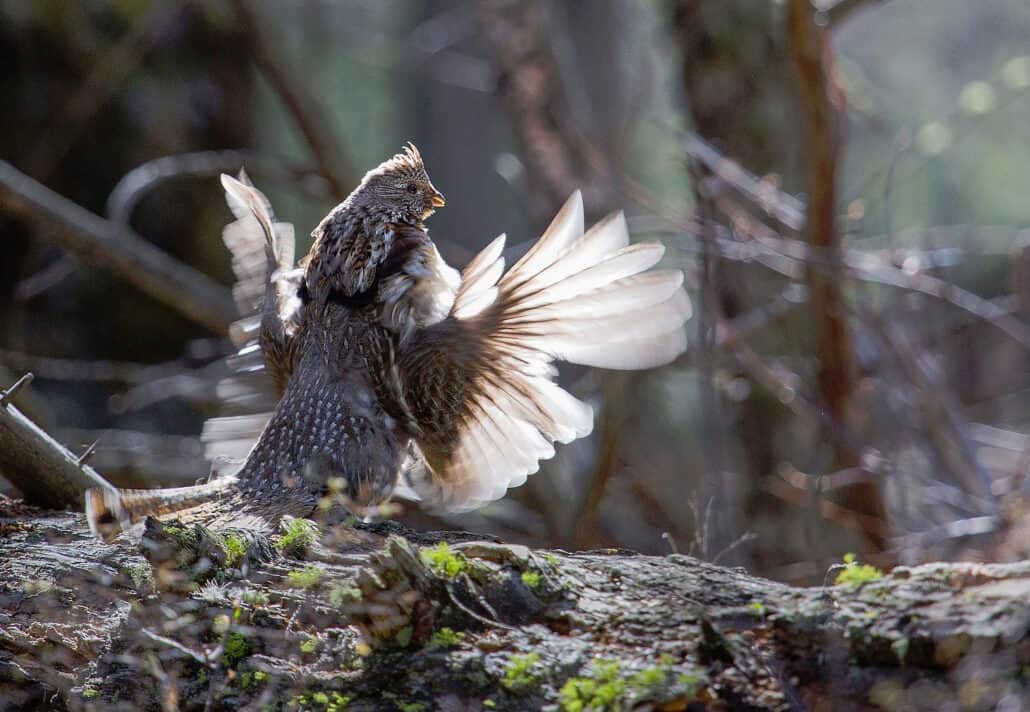Winter Birds of Iowa (December, January, February)
When winter settles solidly into Iowa, there are good birds to be seen even from the comfort of home. Black-capped chickadees congregate at well-stocked backyard bird feeders. White-breasted nuthatches arrive one at a time. From a window overlooking the feeders, a person can see birds up close that were more elusive in summer. American goldfinches, now in their olive-drab winter garb, flock to the feeders, along with northern cardinals, mourning doves, blue jays, house finches, and (in the southeastern half of the state) tufted titmice. Downy and red-bellied woodpeckers come regularly for suet. Less commonly, hairy woodpeckers may join them, as well as the occasional northern flicker and red-headed woodpecker.
Like some people, many birds go south for the winter. And for some birds, Iowa is south. Dark-eyed juncos, American tree sparrows, and purple finches winter here after breeding far to the north. Common redpolls, evening grosbeaks, red-breasted nuthatches, and pine siskins sometimes visit as well. Red crossbills and white-winged crossbills may wander through the state in winter. They’re often found in cemeteries with many conifers, where they pry seeds out of the cones, and occasionally they come to feeders.
If you long to have a free, wild bird eat from your hand, winter is the time to get your wish. Chickadees, nuthatches, and titmice, are the easiest birds to win over to hand feeding, and downy woodpeckers will sometimes get in on the action. The colder the weather, the faster you can persuade the birds to land on your hand for a treat.
Winter in Iowa has its characteristic natural sounds. In February, great horned owls begin courting, filling the night with their evocative low hoots. Barred owls call out Who cooks for you, who cooks for you’all? Chickadees keep in touch with their flocks by frequently rasping chick-a-dee-dee-dee” A pair of nuthatches communicates with nasal yenk calls. From the treetops, high-pitched, sibilant sounds signal the birder to look up and see a flock of cedar waxwings, each with a bright yellow band at the end of its tail and a few tiny red spots like drops of red wax on its wings. Woodpeckers drum on trees, excavating the nest holes they’ll use in spring.
An icy river is a cold and windy place to visit, but hundreds of bald eagles make it worth while. Along the Mississippi River, water coming over the dams keeps the river partially unfrozen, allowing the eagles access to the fish. You’ll notice the big dark birds perched in the bare trees along the river, white heads of the adults gleaming in the winter sunlight. Other eagles are standing or walking on the ice. You may see one circling high over the river, wings outstretched. It begins to dive. As it approaches the river, it changes the angle of approach, until it’s skimming just above the water. Suddenly it swings its yellow feet far forward and then, at the moment of contact, strikes backward. After the splash, you can see that the eagle has a fish in its talons. It carries its meal to the top of a tall tree and eats it.
Several of the dams along the Mississippi River offer good bald eagle watching in winter, especially Lock and Dam 19 at Keokuk, with as many as 400 eagles present some days. Other good spots on the Mississippi are at the Quad Cities, Pikes Peak, and at Effigy Mounds National Monument. If you can tear yourself away from the sight of bald eagles, you can see lots of other interesting birds along Mississippi. Canvasbacks assemble along Mississippi River at Keokuk. Nearby is the Linger Longer Rest Stop, by Montrose, where one can often see ducks and tundra swans. And there are often hundreds of American crows walking on the ice.
You can also watch wintering eagles at the tailwaters below Red Rock Reservoir, in Marion Co. While you’re there, you might want to practice sorting out the gulls. Most of them will be herring gulls and ring-billed gulls, but sometimes you’ll be surprised by Thayer’s, Franklin’s Bonaparte’s, or Sabine’s gulls. TIP: Dress more warmly than you think you’ll need to—it’s colder than you think.
A few snowy owls come south into Iowa, usually young ones, which are streaked and spotted rather than pure white like the adult owls. Occasionally a northern saw-whet owl takes up residence in a grove of conifers and spends the winter, often roosting on the same low branch day after day and allowing surprisingly close approach by birders. Once in a great while a great gray owl winters in the northern counties. A birder’s best chance of seeing these rarities is to learn of its location from other birders. This is a benefit of staying in contact with the Iowa Ornithologists’ Union.
When driving in the countryside in Iowa, it pays to carry along binoculars and a spotting scope. Rough-legged hawks often hunt over open farmland or other open country. You’ll see a large bird hovering over a field, head pointed down as it studies the ground. Northern harriers are also fairly common in winter, skimming low over the ground, following the hills and swales of the earth. Snow buntings winter in small numbers near Iowa lakes and reservoirs and are found along snowy roadsides, frequently with horned larks and Lapland longspurs.
As winter draws to a close, signs of spring are already afoot. As early as February, snow geese and killdeer begin returning to the state. You’ll hear the killdeers’ loud, ringing kill-deer call as they fly overhead and land in a field that may still be partially frozen. The cardinal starts singing his loud cheers early in the morning. American goldfinches sprout black feathers where caps will grow. In the town, rock pigeons are cooing audible valentines on the window ledges of public buildings. In early March, the first eastern phoebes return to streams and start checking out their nest sites under the bridges. Early sparrows return, including fox sparrows and others. Spring is on its way.




